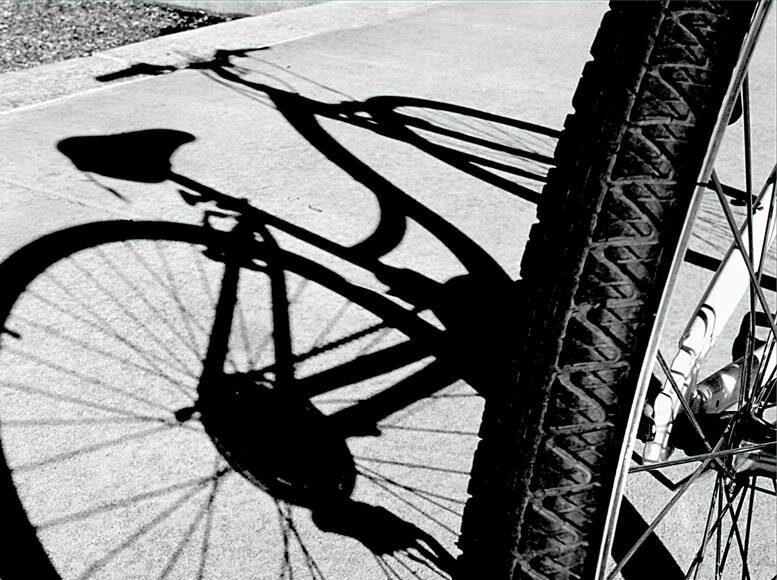Shreveport and Bossier City are experiencing a growth surge. State, city, and parish leaders are working hard to bring durable industries to our area. Durable industries which will attract and retain the educated citizens needed to sustain and grow those industries. How do we provide a welcoming environment with diverse activities that will promote our cities? We have an opportunity to improve the Cities of Shreveport and Bossier. We have the chance to make Shreveport/Bossier a destination, and take a leap towards Shreveport’s motto: “The next great city of the South.” We can do this by creating linear parks by converting abandoned rail beds into paved multi-use trails. Taking advantage of this resource will contribute to a fitness friendly amenity that will highlight Shreveport and Bossier City as the next great cities of the south.
Shreveport and Caddo Parish are making great strides to expand bicycle access and trails. As reported by Michele Marcotte in the Shreveport Times (November 2013) Caddo Parish and Shreveport constructed a 17 mile bike lane on North Lakeshore Drive. This provides a safe bike route insulated from the worst traffic of our cities. Additionally, the city has began providing bicycle racks downtown to encourage bike commuting. An organization dedicated to expanding bike routes and hiking paths in Shreveport, ABetterShreveport, is energetically advocating use of drainage ditches for bike routes. These routes complement the existing paved trails that extend along the Clyde Fant and Arthur Teague Parkways on either side of the Red River. The next step should be to convert unused and abandoned railroad lines into paved, multi-use paths. Converting our unused rail lines will expand the existing trails and provide a safe alternative for bicyclists and hikers traversing or commuting in our city. It will also increase foot traffic in the downtown areas.
Where to start? There are unused rail lines on both sides of the Red, but the majority are in Shreveport. A drive around Shreveport reveals some intriguing possibilities. A terrific start would be converting the Waddell “A” truss bridge over Cross Bayou into a biking and walking path. The industrial area the bridge connects to has many thriving businesses but it also has wide open areas. These open spaces could become parks and parking lots. This would give the citizens of Shreveport a park that directly links to Festival Plaza. Moreover, interspersed among the active businesses, are unused and collapsing buildings. These are hazardous and could be removed; creating more parks and open areas, removing eyesores and replacing them with attractive amenities which emphasize outdoor activity. The link to Festival Plaza avoids the surface streets and provides safer parking areas.
And what about the area between our new parks and Festival Plaza? The casinos are a prominent feature on the riverfront. However, efforts to breathe further life into that area have been met with difficulties primarily because the Red River Arts District brought restaurants and bars which competed with the casinos. That’s impossible. El Dorado and Sam’s Town offer good entertainment and classy restaurants with reasonable rates, so why compete with them?
The answer is recognizing the genuine gem of the confluence of the Barnwell Arts Center, Sci-Port: Louisiana’s Science Center, and Riverview Hall. The Red River Arts district could become an artistic and intellectual hub, building on what is available with Barnwell and Sci-Port. It could emphasize art galleries, coffee shops, and upscale shopping. The area would be similar to Line Avenue, except patrons won’t have to fight traffic to access them. They park their cars and ride their bikes from the parks, across the bridge, into the nascent arts district. From there it’s an easy bike ride to the Strand Theater, Robinson Film Center, and the Shreveport Memorial Library.
The new multi-use trail doesn’t stop with a new park and link to an arts district. Looking at the map, you’ll note the rail lines in the industrial area link to an abandoned rail line that formally ran from Shreveport to Texarkana (detailed at abandonedrails.com/Texarkana_to_Shreveport). Parks and parking areas in the industrial area could serve as a jumping off point for the energetic explorers looking for a longer challenge.
You, dear reader, may have already noted many counterpoints. The largest of course is; who will pay for all this? I don’t know. Another question, are these rail lines abandoned or simply unused at this point? There’s an important distinction that lies here that could derail the project before it even starts. I also mentioned abandoned buildings. The fact is, driving around and not seeing any cars in the parking lot doesn’t mean the property is unused. It doesn’t mean that development plans aren’t in the works. Nothing out there is free for the taking. I can’t begin to enumerate the studies necessary to ascertain ownership and intent of property use. Bottom line: I’m not advocating taking something that already belongs to someone for another purpose. So if you’re reading this and you own a railroad, a building, or property in one of the highlighted areas – rest easy. But do consider other ways it can be used if it’s not currently in use.
Nationwide, hundreds upon hundreds of miles of abandoned rail lines have been converted to multi-use trails. A great example lies just a few hours south of us in St. Tammany Parish, the Tammany Trace Rail Trail (tammanytrace.org). Resources abound for those looking to convert rails to trails. The National Rails to Trails conservancy (railstotrails.org) offers substantial assistance in the form of trail construction, all the way to community organizing to bring rail-trails to reality in local areas.
We have a real opportunity to realize Shreveport’s motto of being “the next great city of the South.” We can do this by expanding biking and multi-use trails and routes in Shreveport and Bossier City. There is a remarkable resource available to do this, our abandoned and unused railroad beds. These can be converted into multi-use trails, linking existing trails with new trails being constructed from drainage ditches and bike lanes. The nexus lying at The Barnwell Center, Sci-Port: Louisiana’s Science Center, and Riverview Theater could become the heart of an artistic and intellectual hub, shining brightly at the center of our two cities.
I must acknowledge the assistance of the Bossier Parish Library History Center (bossierlibrary.org/depts/history/). The staff was very helpful in navigating their extensive map collection. They dropped everything to help me out one fine afternoon in December. I couldn’t have done this without their help. Moreover, the Shreveport Railroad Museum that is associated with the Shreveport Waterworks Museum has historical maps that reveal locations of old railroads in Shreveport and Bossier City. It is a phenomenal resource.
Map depicting routes of currently abandoned and unused rail lines in Shreveport. There may be more and there is more research still to do, but this is a start.
– See more at: http://heliopolissbc.com/Article/rails-trails#sthash.PJaqLTrX.dpuf

